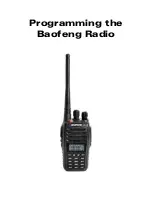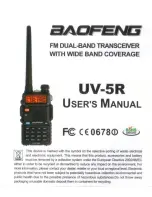
Additional information
12
89
En
No sound
Symptom
Cause
Remedy
No sound is output when an
input source is selected.
• Improper connections.
• Make sure you have properly connected the component
to the corresponding input on the back of the receiver
(see
Connecting your equipment
on page 15).
• Sound is muted or the volume is turned
down.
• Press
MUTE
or adjust the volume accordingly.
• Speakers are turned off or selected
improperly with the
SPEAKERS
switch.
• Press
SPEAKERS
to select the proper speaker set (see
Switching the speaker system
on page 67).
• The input signal type is incorrect.
• Press
SIGNAL SELECT
to select the proper input signal
(see
Selecting the input signal type
on page 42).
• The multichannel analog inputs are
selected.
• Press
MULTI CH INPUT
again (see
Using the
multichannel analog inputs
on page 41).
No sound output from the front
speakers.
• The front speakers aren’t connected
properly.
• See
Installing your speaker system
on page 28 to
connect them properly.
No sound from the surround or
center speakers.
• Speaker settings are incorrect. (for
example, they have been set to
NO
).
• Check you speaker settings in
Speaker Setting
on
page 51.
• The surround and/or center levels are
turned down.
• Check the levels in
Channel Level
on page 52.
• The surround and/or center speakers aren’t
connected properly.
• Check
Installing your speaker system
on page 28 to
make sure the speakers are connected correctly.
• The
STEREO
listening mode has been
selected.
• Choose a surround listening mode (see
Listening in
surround sound
on page 37).
No sound from surround back
speakers.
• Surround back speakers are set to
NO
.
• Set the surround back speakers to
LARGE
or
SMALL
(see
Speaker Setting
on page 51).
• The
SB CH
mode is switched off
.
• Set the surround back channel to
SB CH ON
(see
page 43).
• The source is not a 6.1 channel playback
source.
• Choose an advanced effect listening mode (see
Listening in surround sound
on page 37).
• The surround back speakers aren’t
connected properly.
• Check
Installing your speaker system
on page 28 to
make sure the speakers are connected correctly.
• The surround back channel is on the 1
speaker setting, and your speaker is
connected to the right channel output.
• Connect the speaker to the surround back left channel
output (
Installing your speaker system
on page 28).
• The
SB CH MODE
is switched to
AUTO
and
the Dolby Surround EX / DTS ES software
you’re playing has no flag to indicate it is 6.1
compatible.
• You can still listen with surround back sound by setting
the surround back channel to
SB CH ON
(page 43).
No sound from subwoofer.
• The bass attenuator is set too low (for
example, the
-80
setting).
• See
Bass Peak Level
on page 86 to adjust the setting.
• The subwoofer isn’t connected properly, or
it is switched off.
• Connect or switch on the subwoofer (see
Installing your
speaker system
on page 28).
• Make sure the sleep function on your subwoofer isn’t
activated.
• The subwoofer's settings are incorrect.
• Set the subwoofer (see
Speaker Setting
on page 51) to
YES
or
PLUS
.
• The crossover frequency is set too low.
• Set the crossover frequency to a (higher) frequency that
matches your speaker characteristics (see
Crossover
Network
on page 80)
• There is very little low frequency information
in your source.
• Change your subwoofer setting to one of the following in
the
Speaker Setting
on page 51:
Front:
SMALL
/ Subwoofer:
YES
Front:
LARGE
/ Subwoofer:
PLUS
• The subwoofer's levels are too low.
• See
Channel Level
on page 52 to check the speaker
levels.
• Check the volume control on the subwoofer to make
sure it is turned up.
VSX-9300.book 89 ページ 2004年5月21日 金曜日 午前11時28分












































